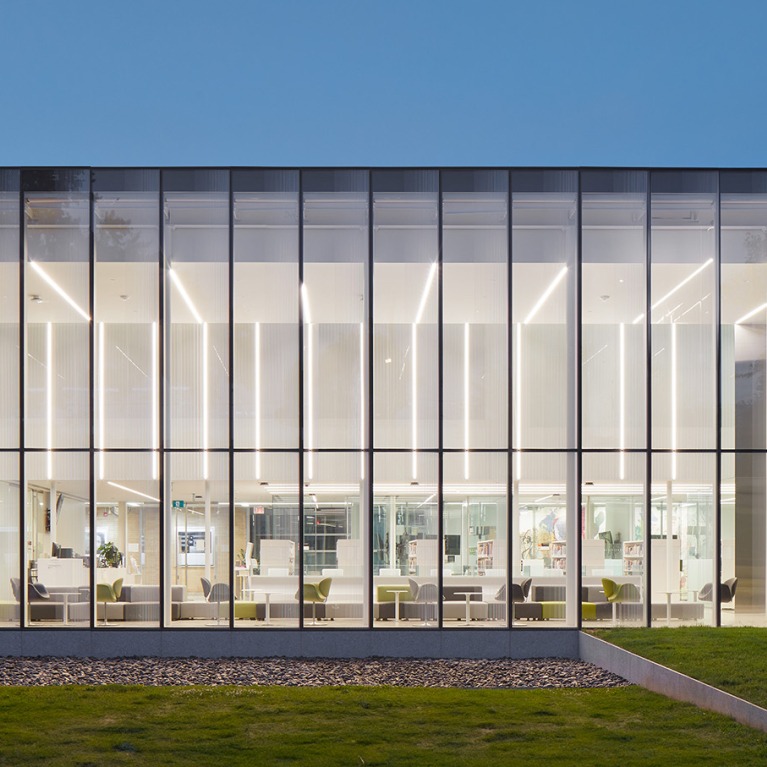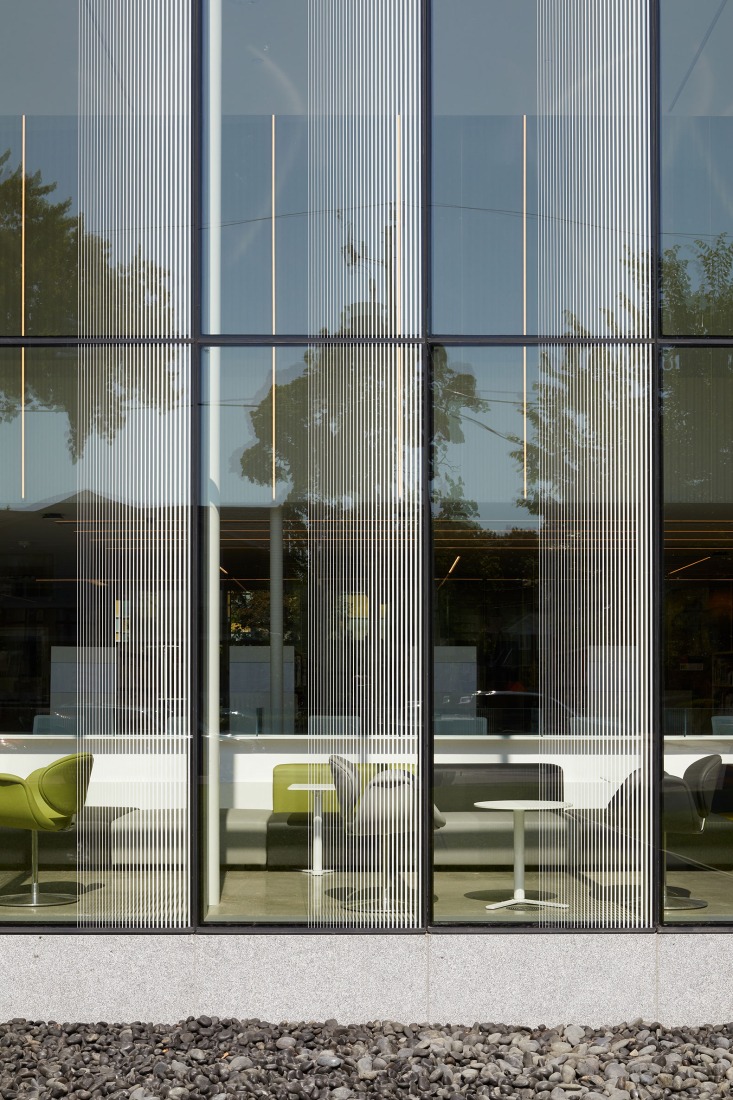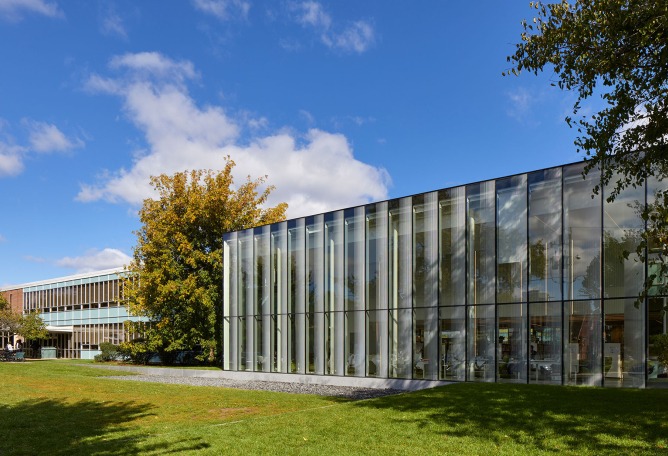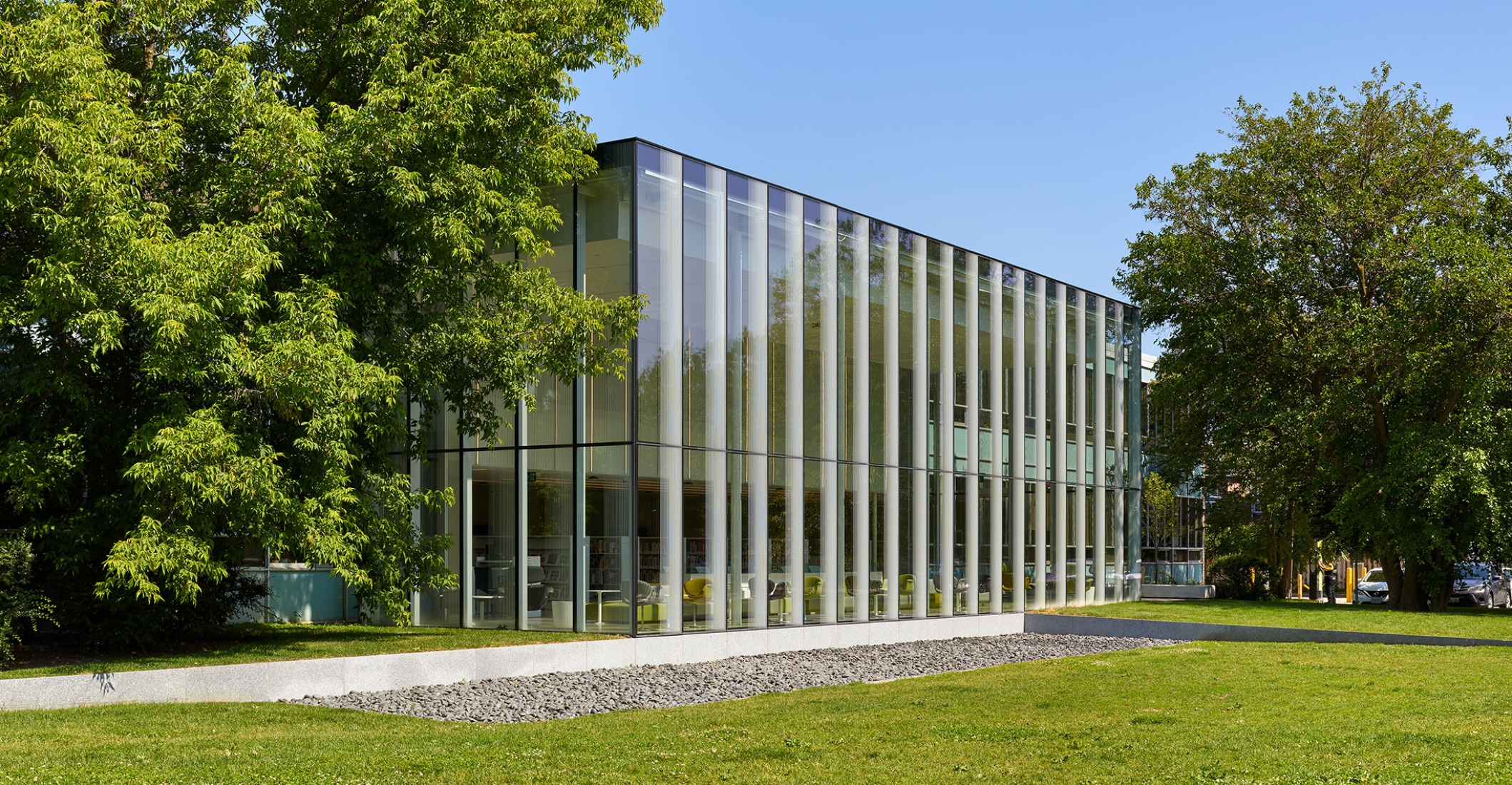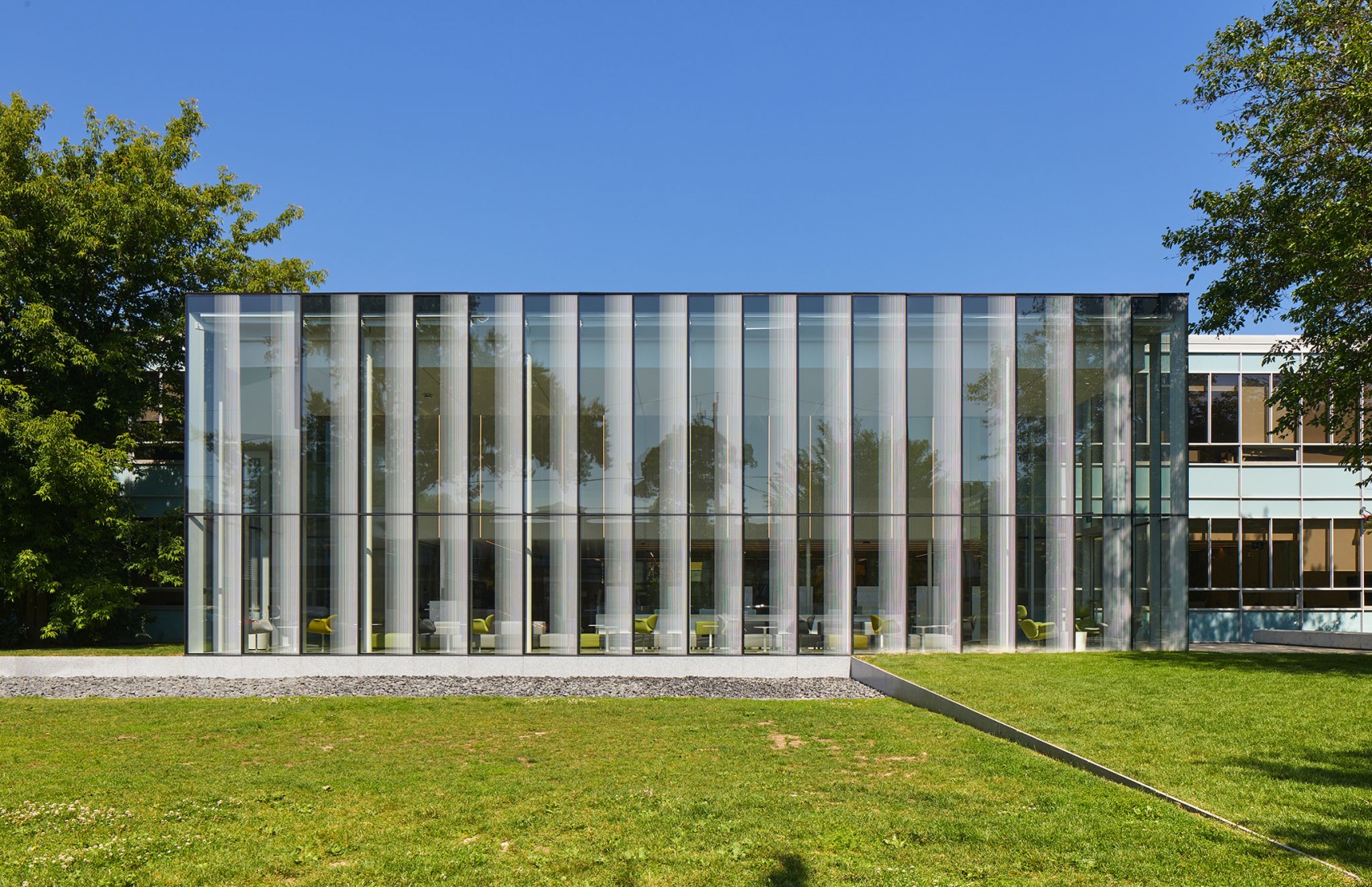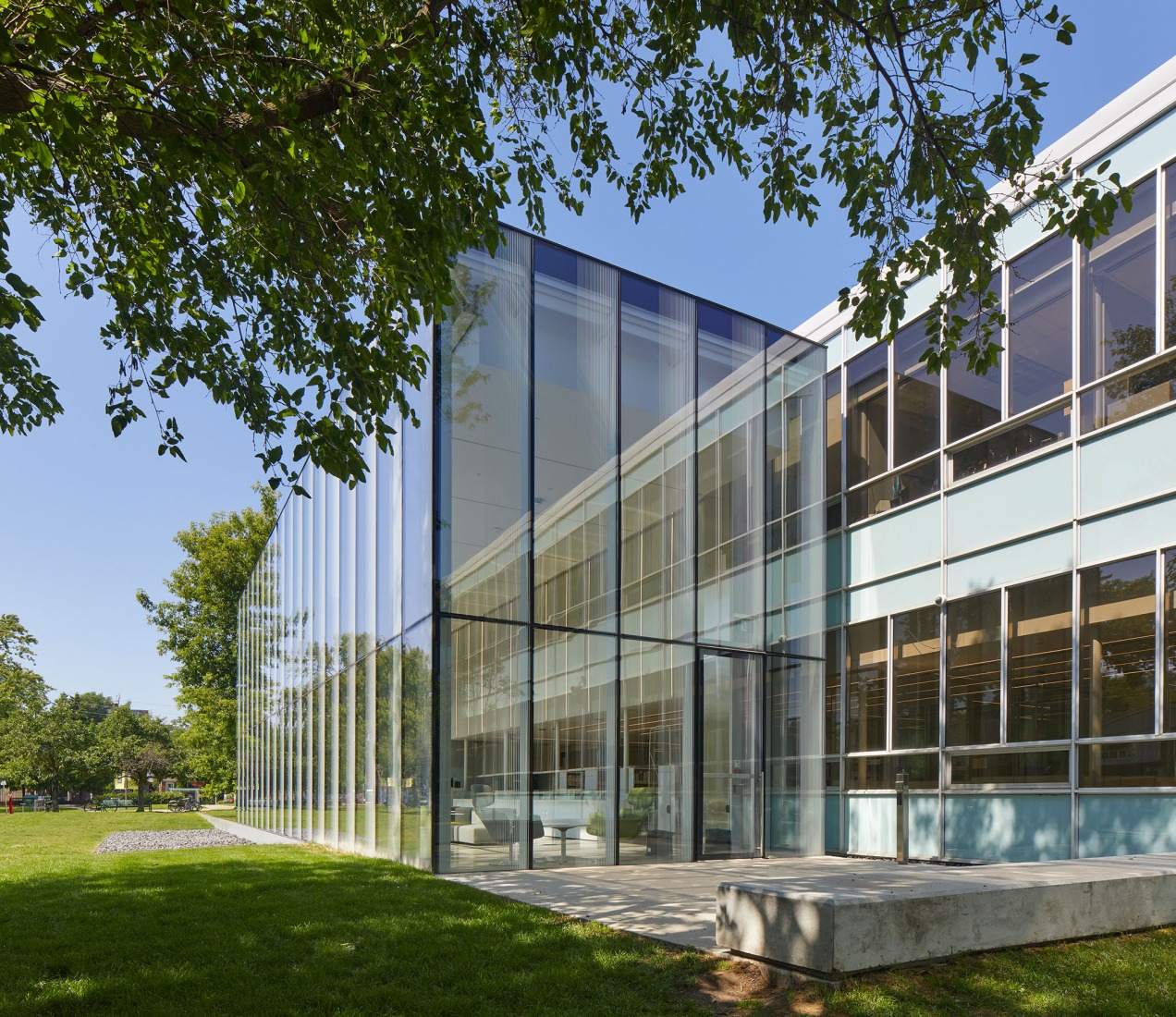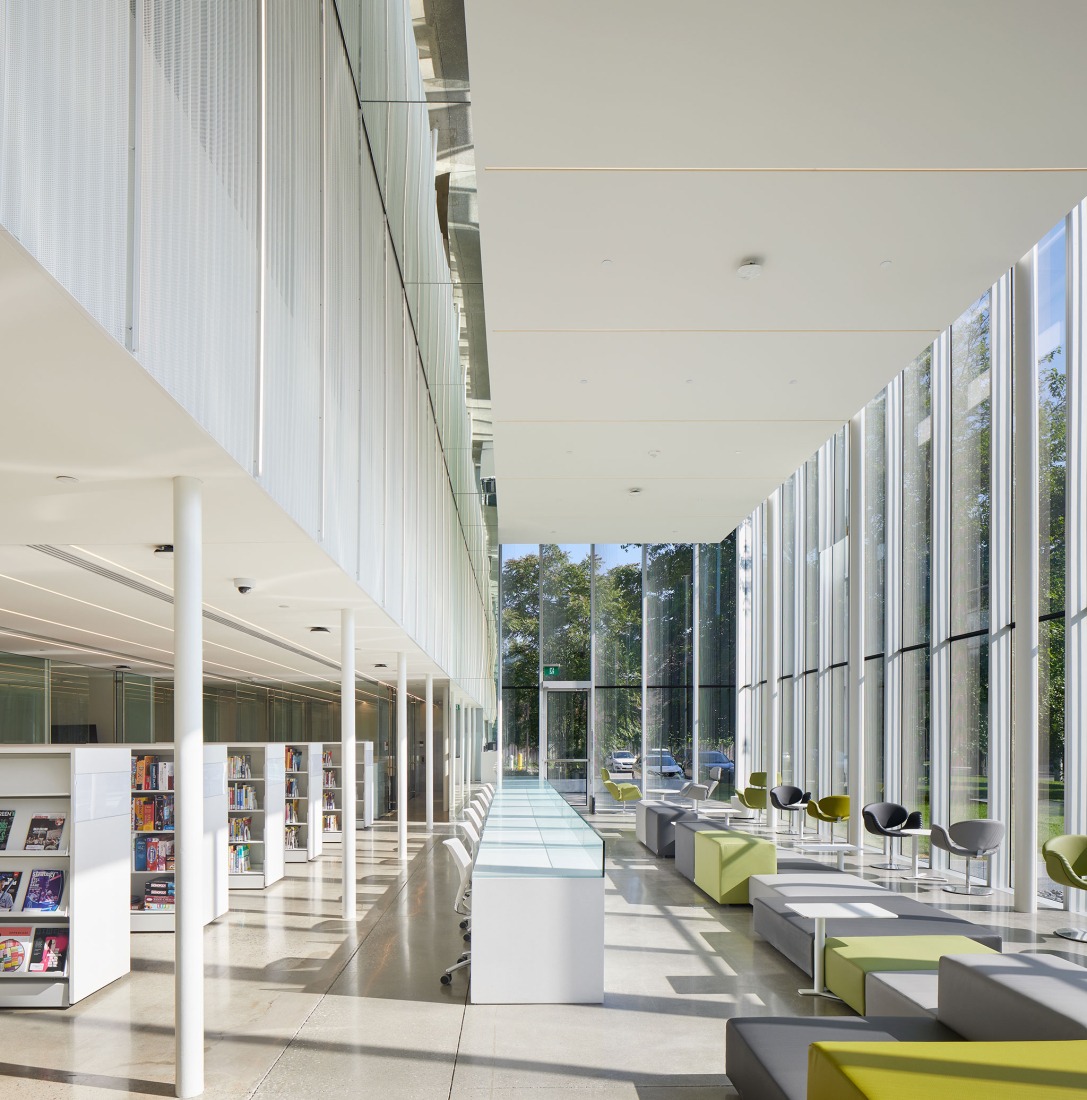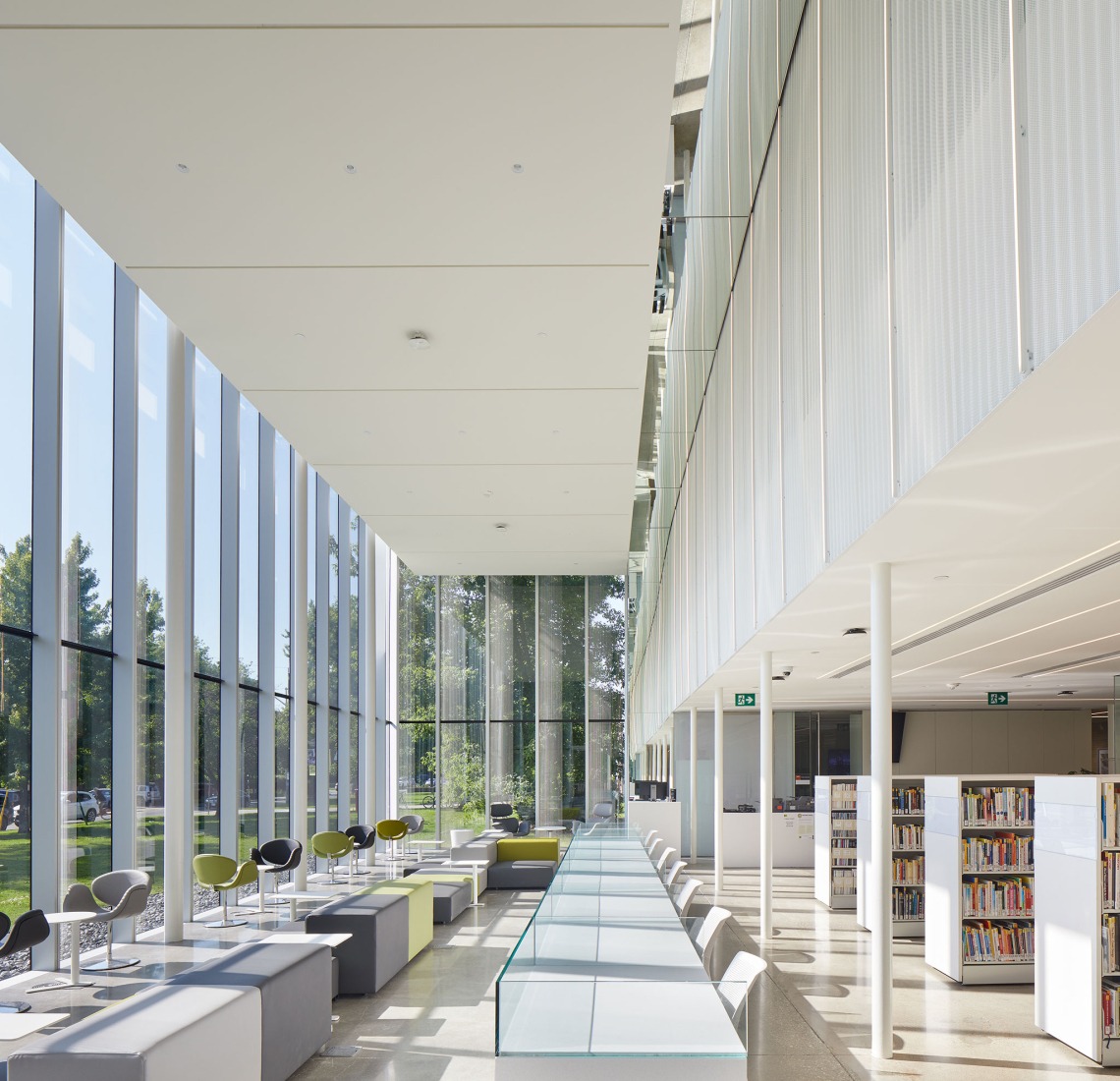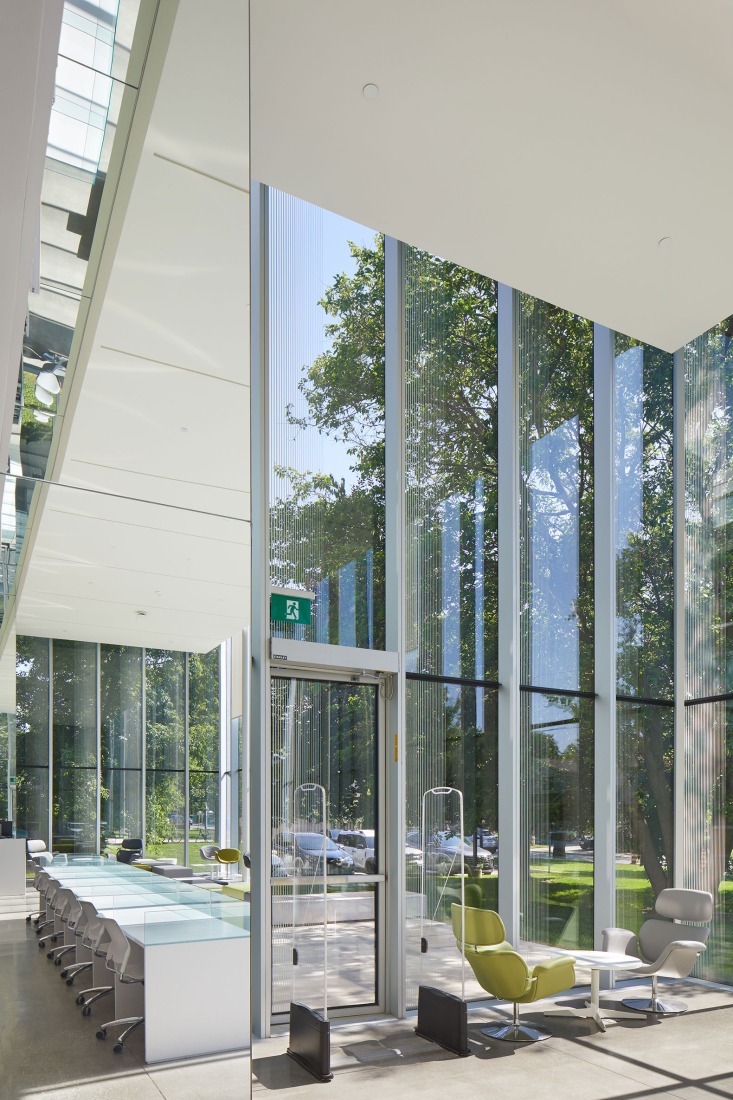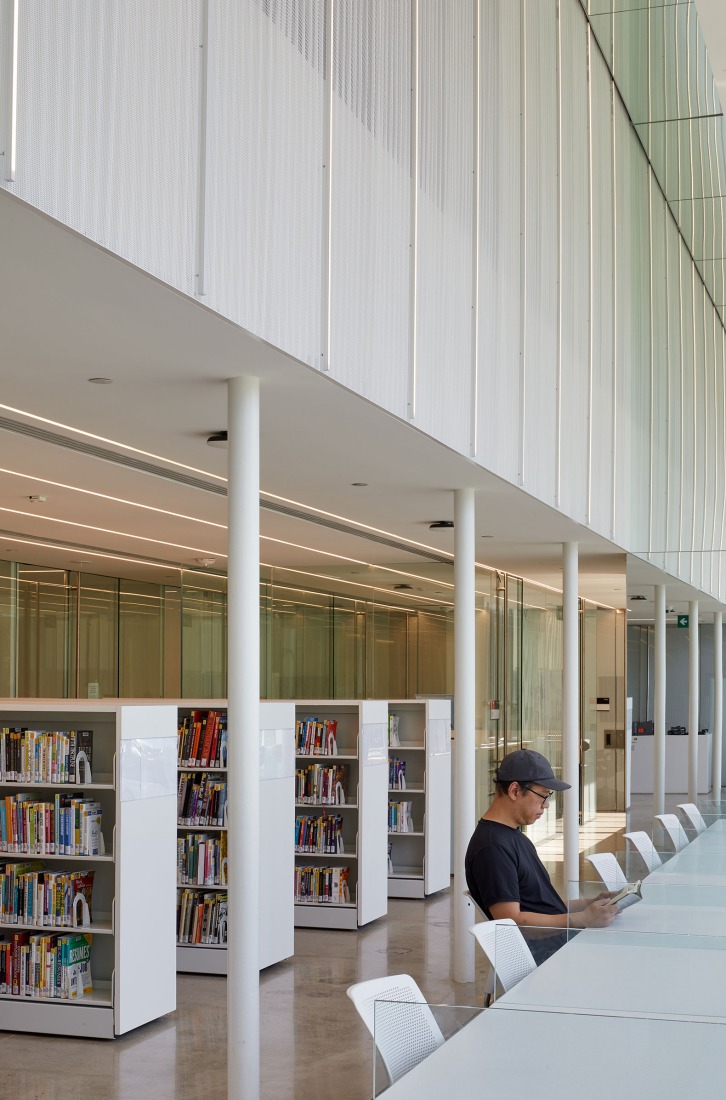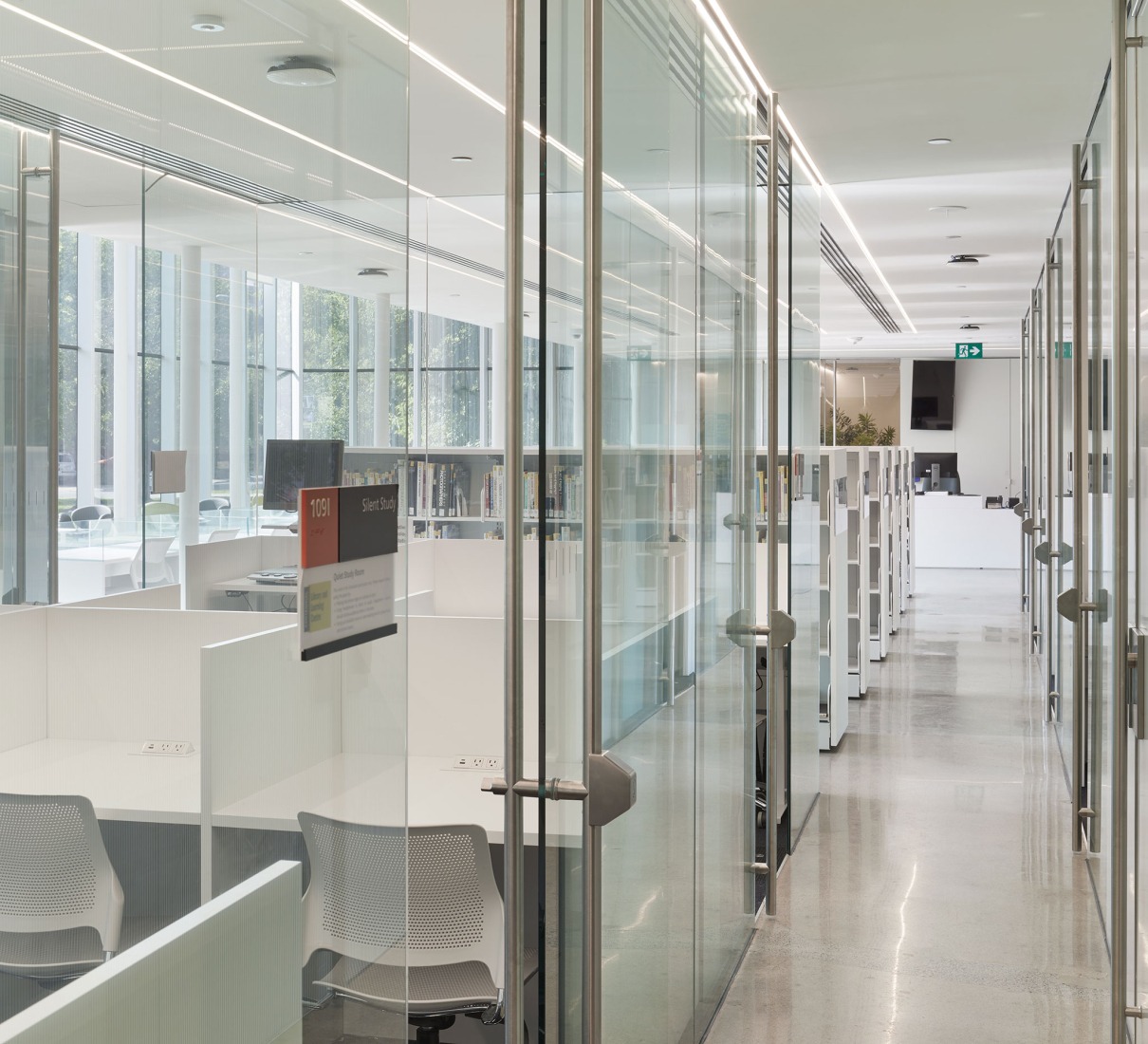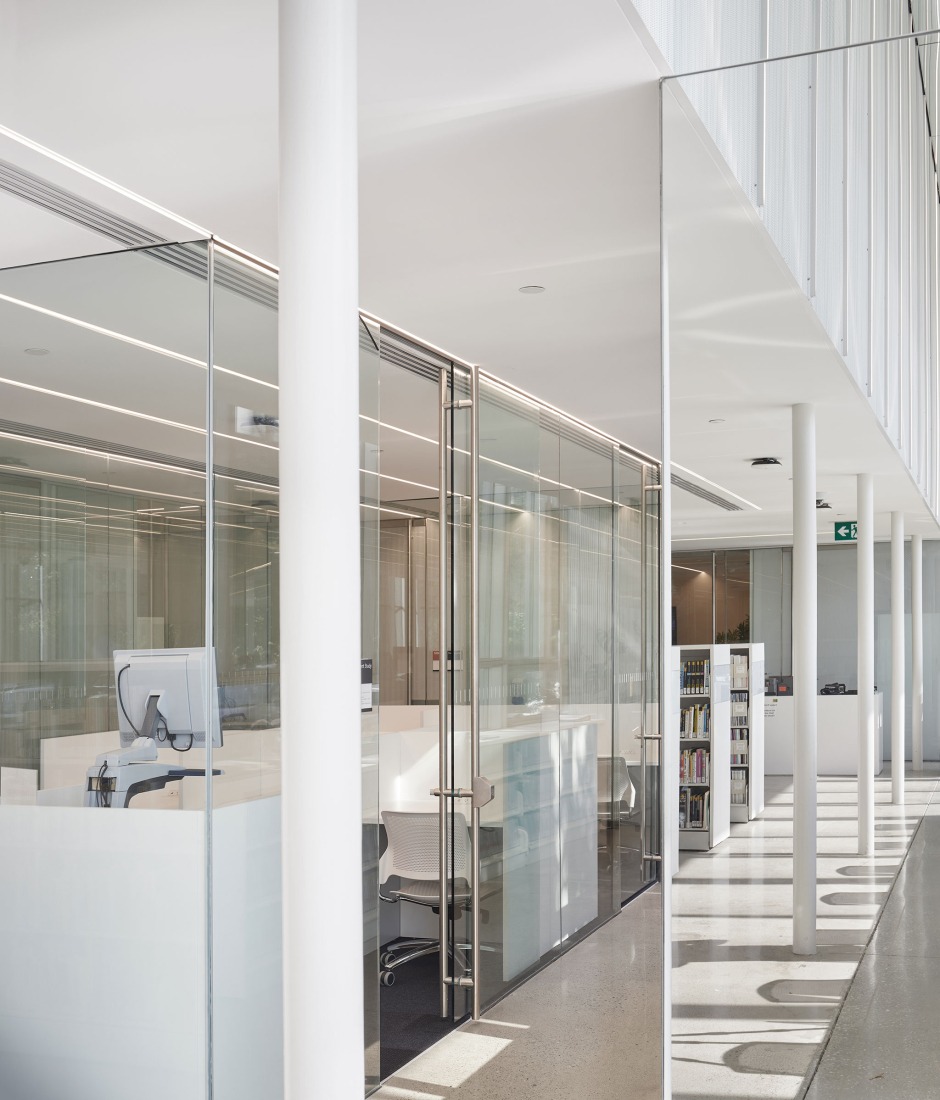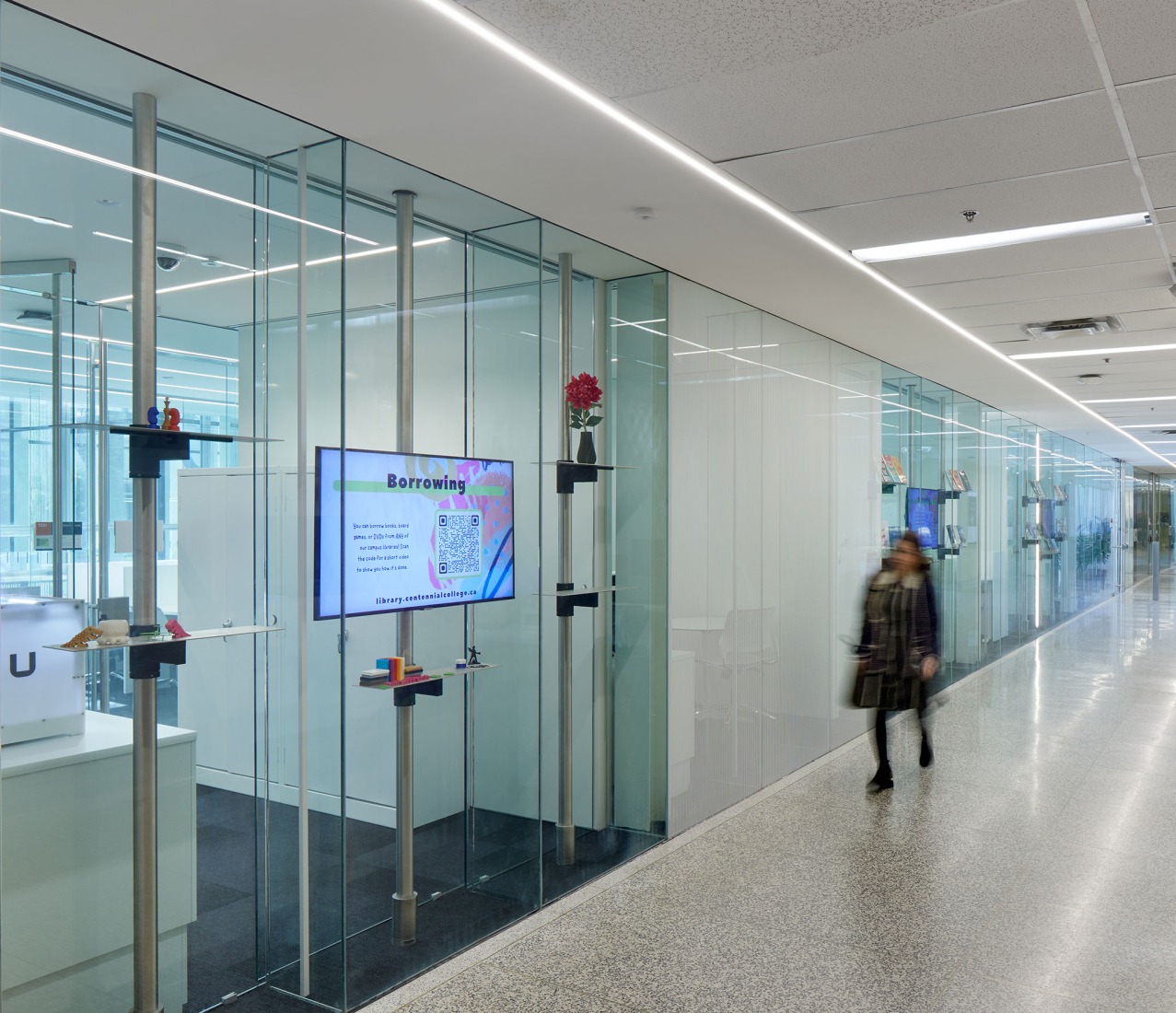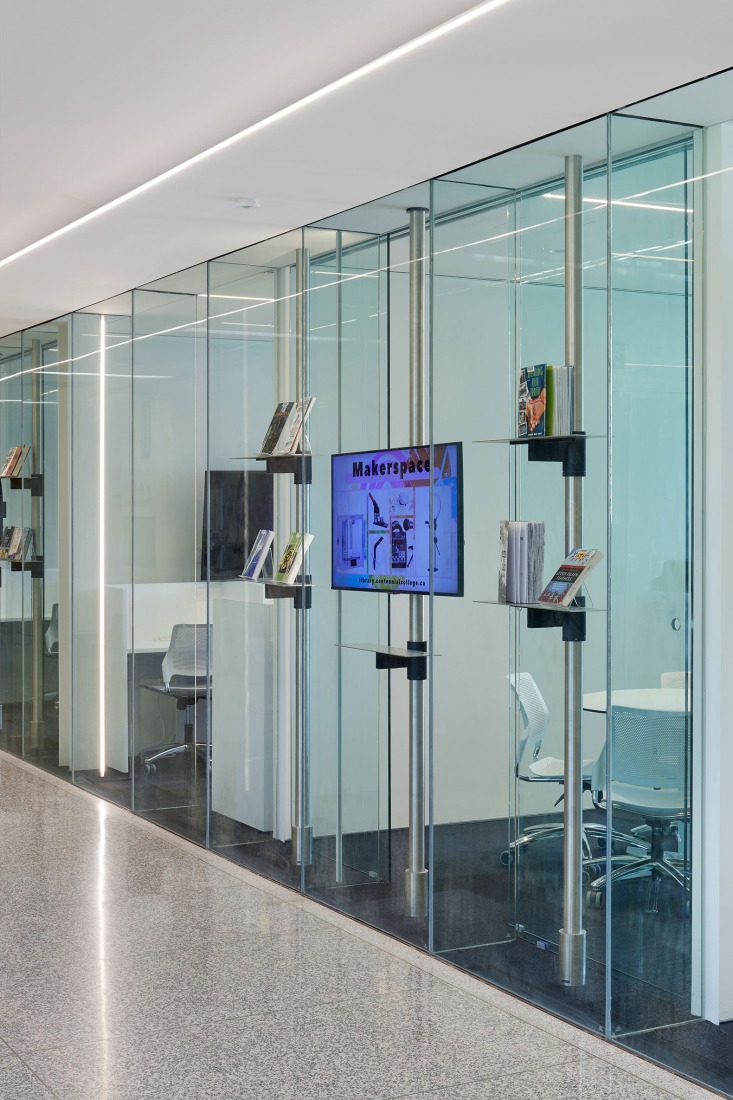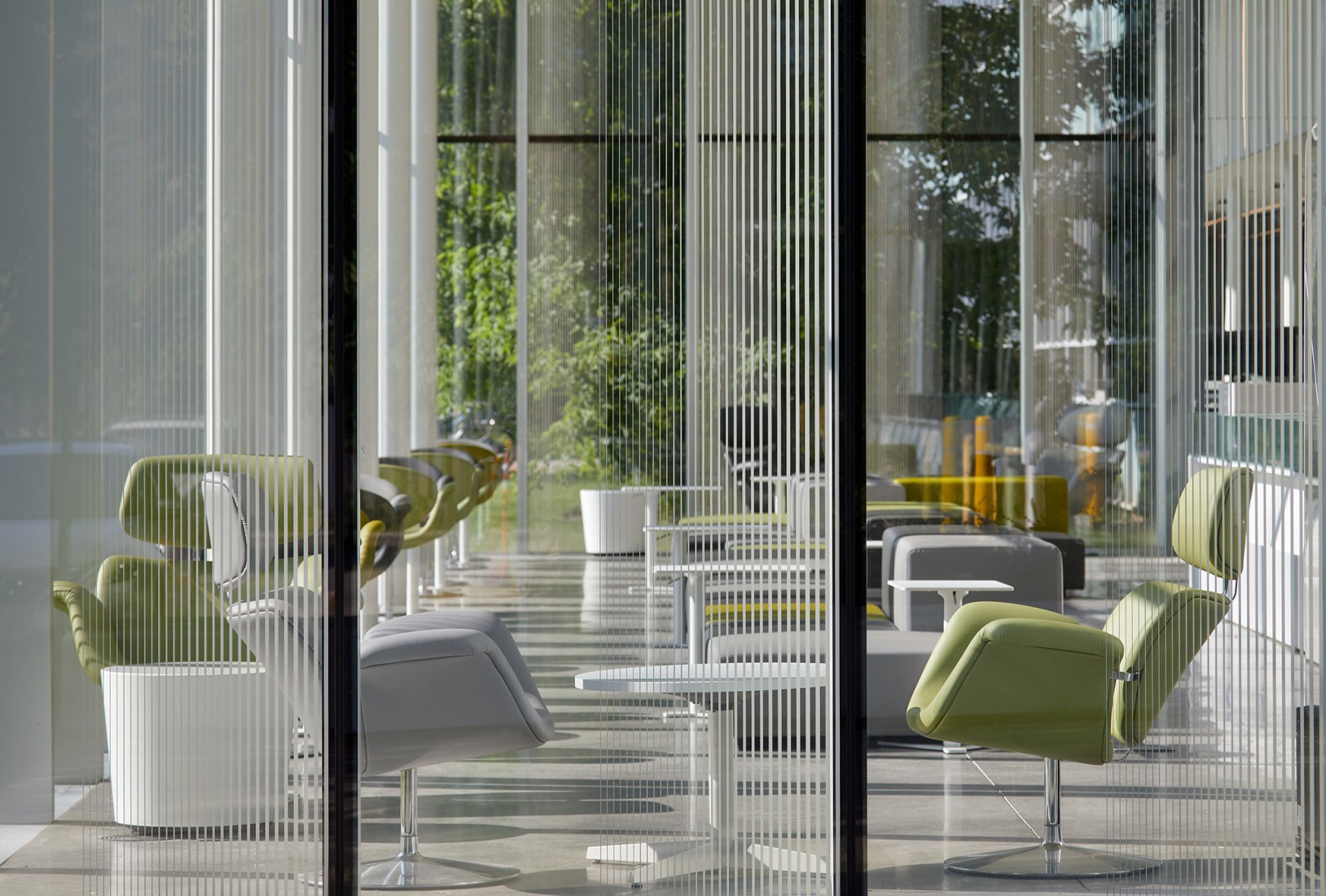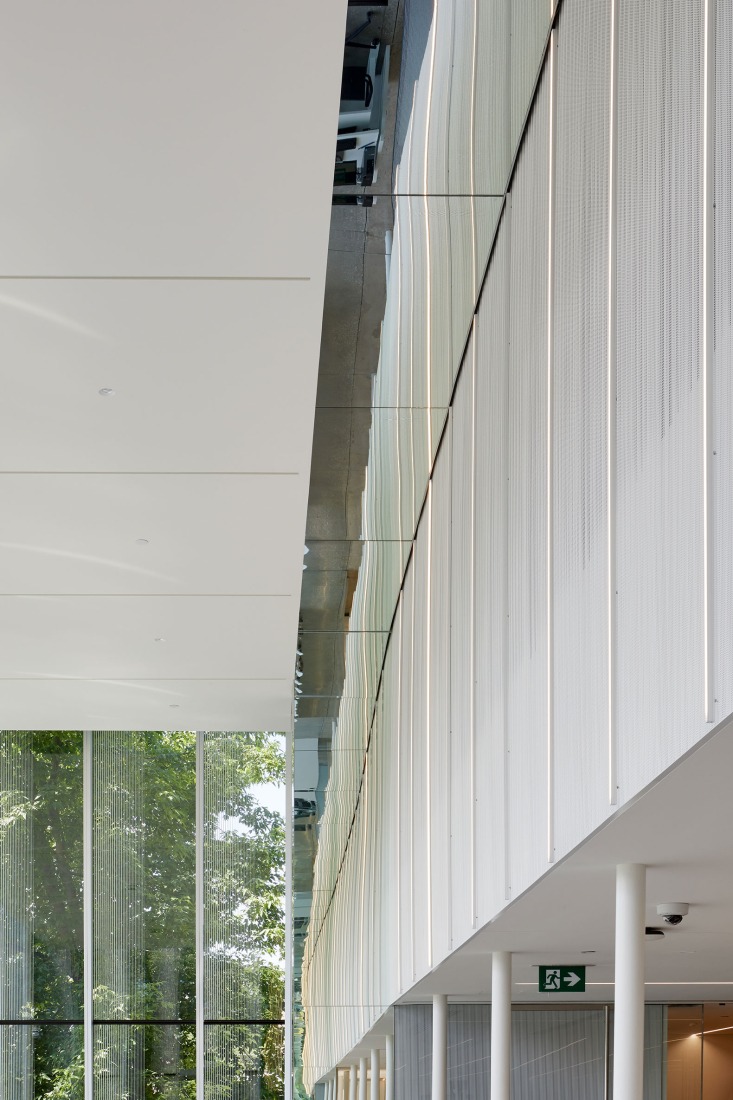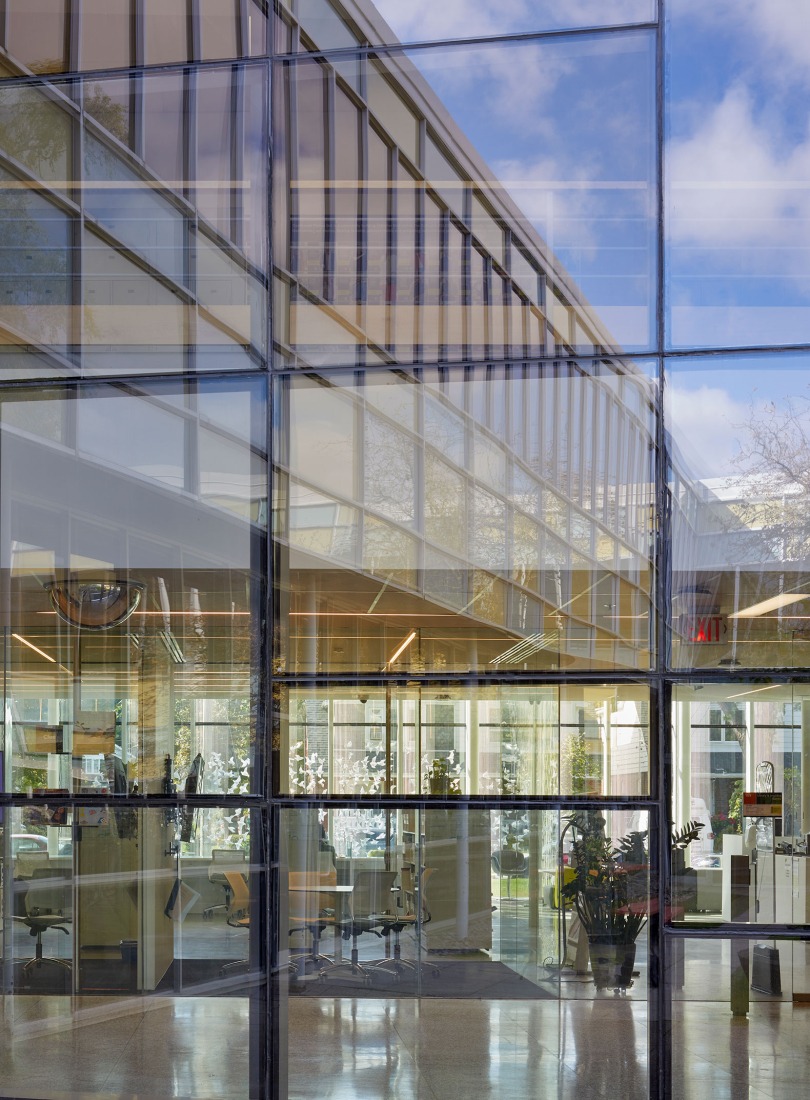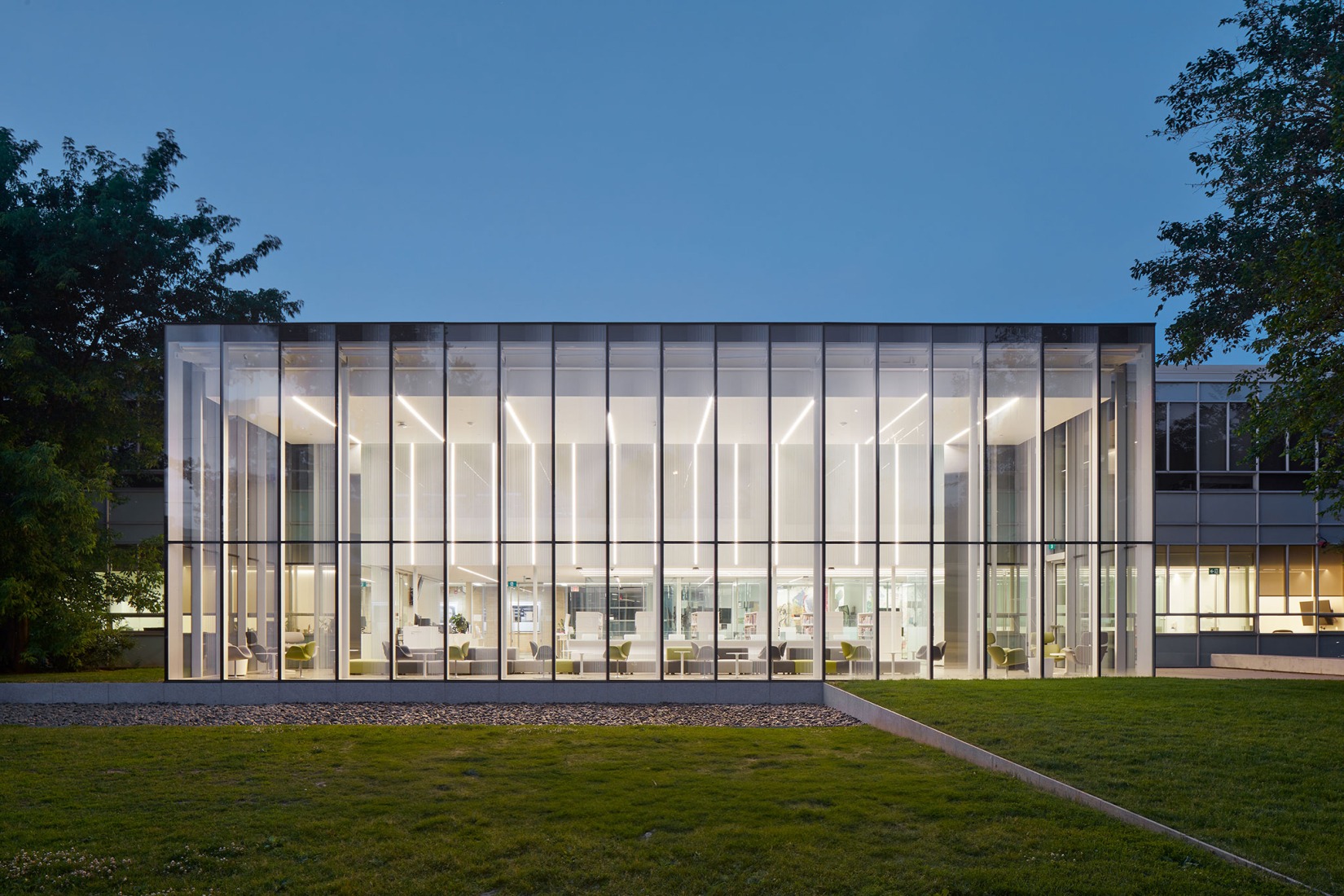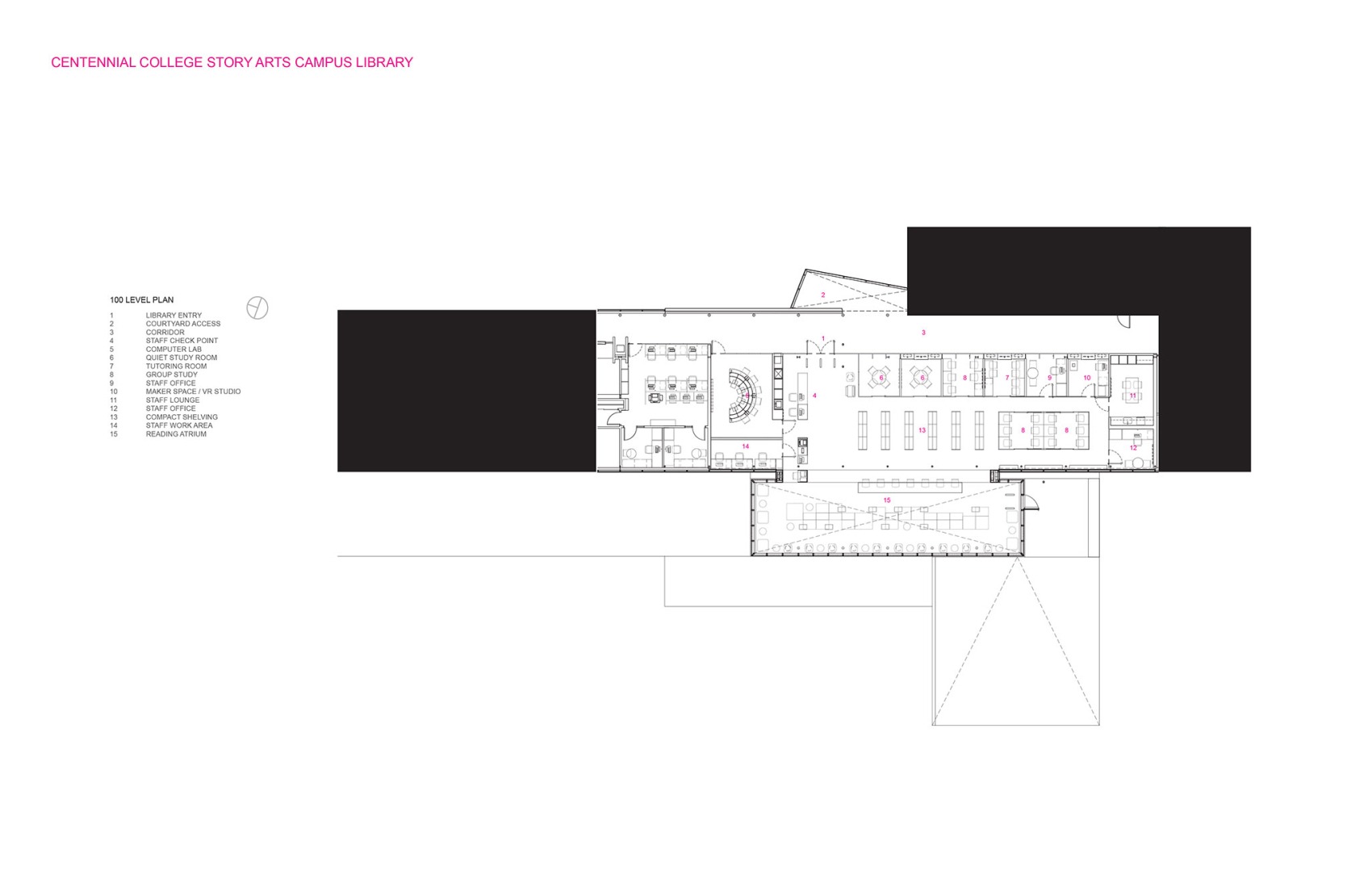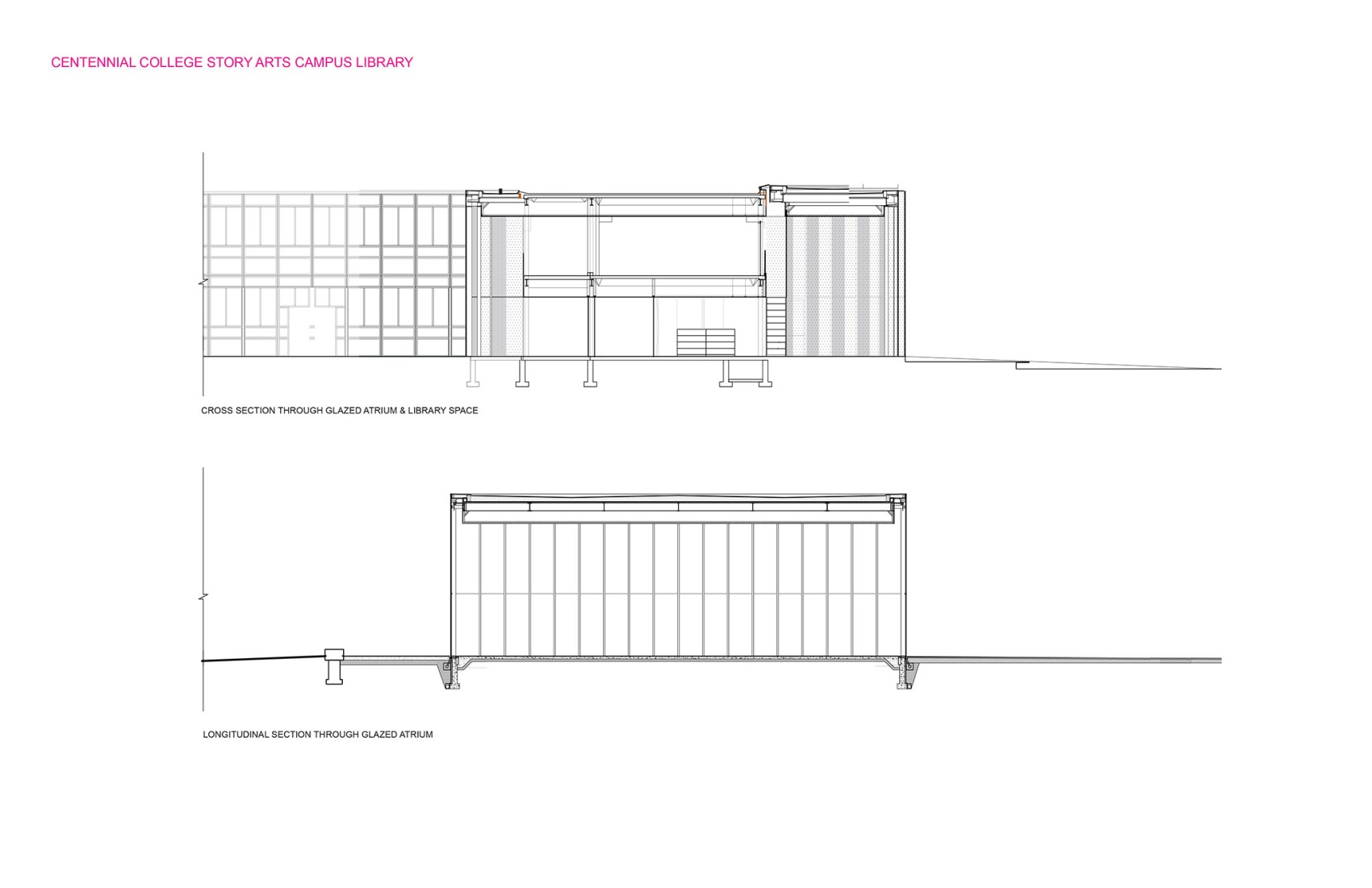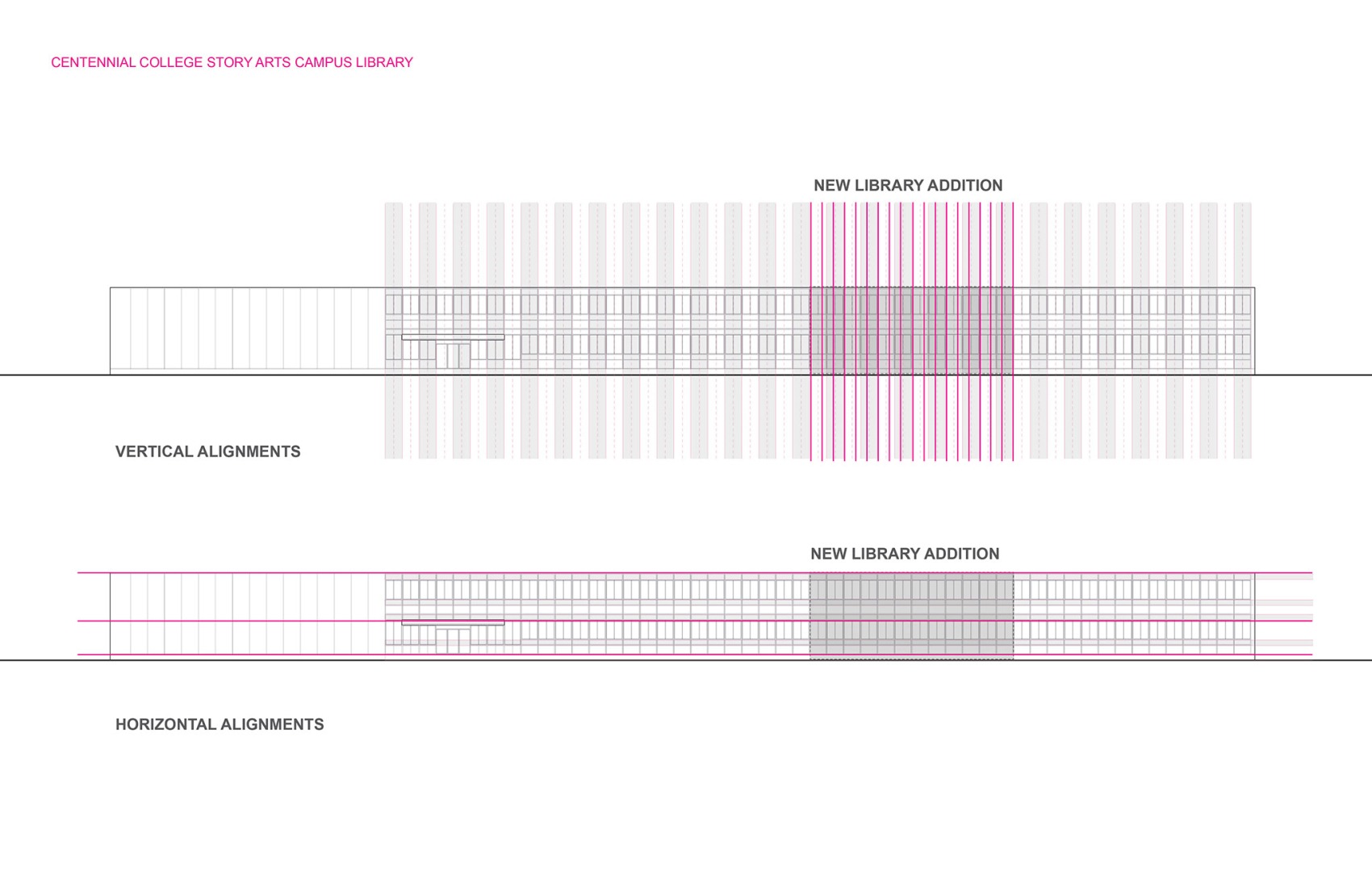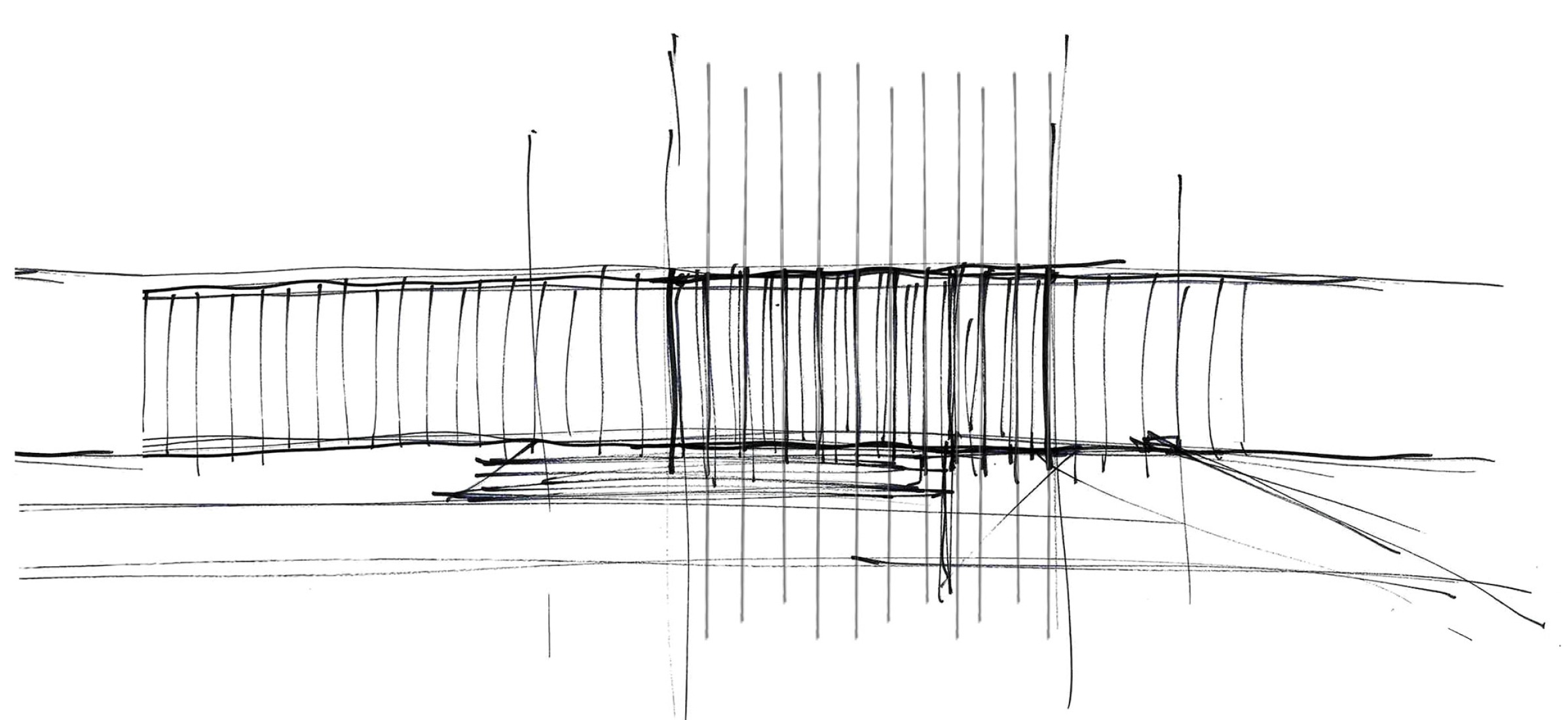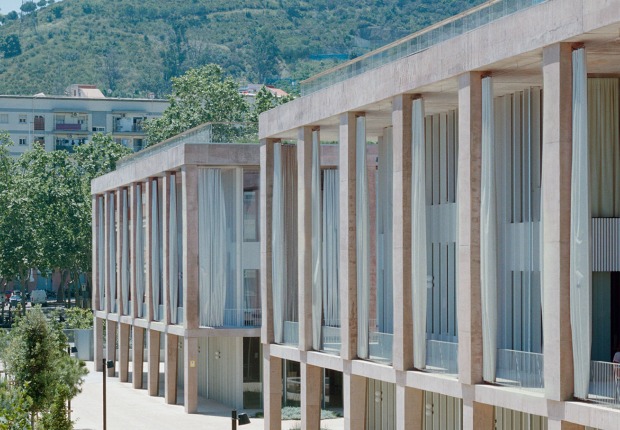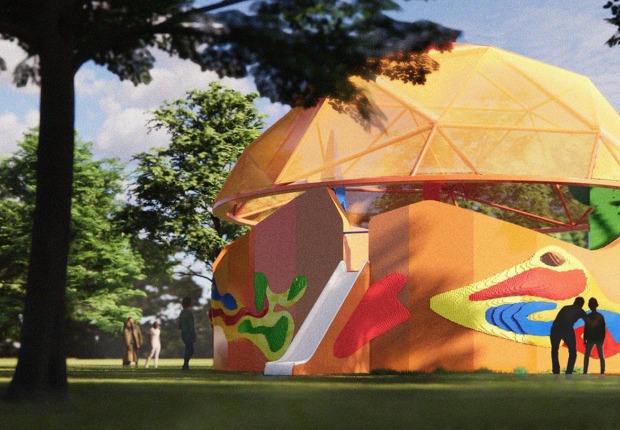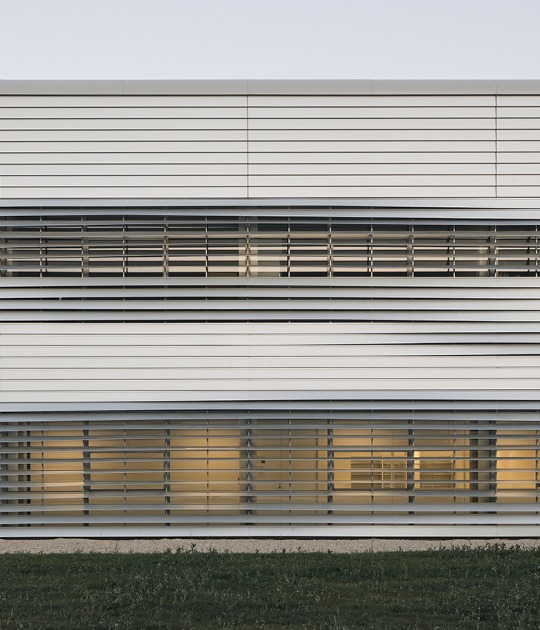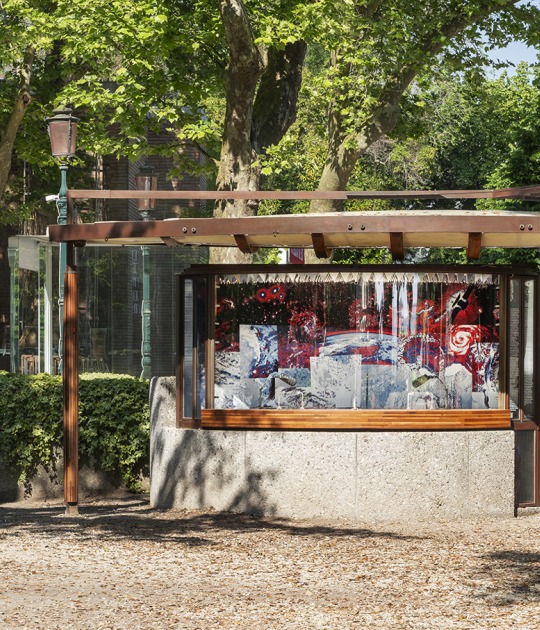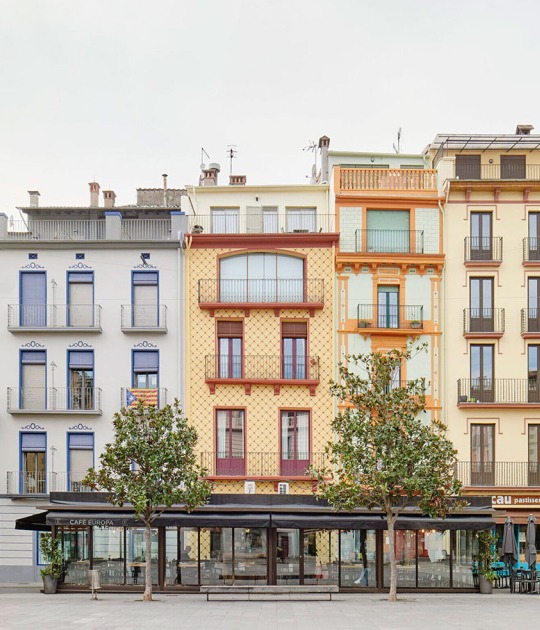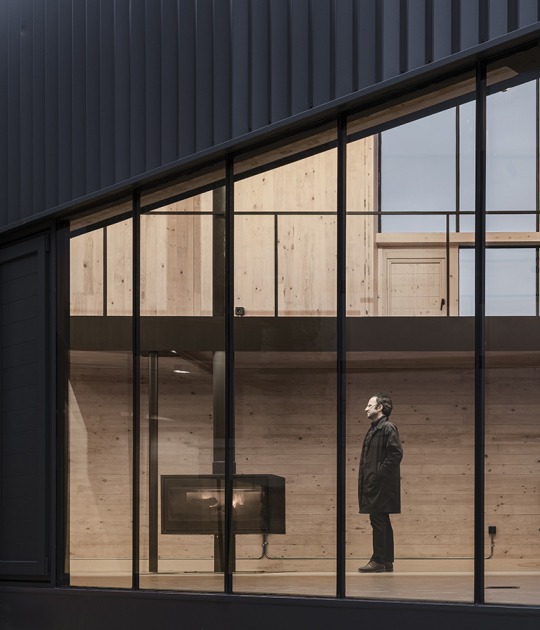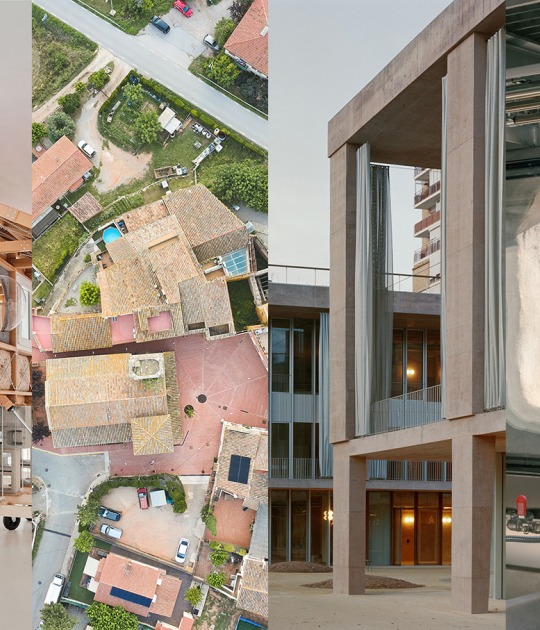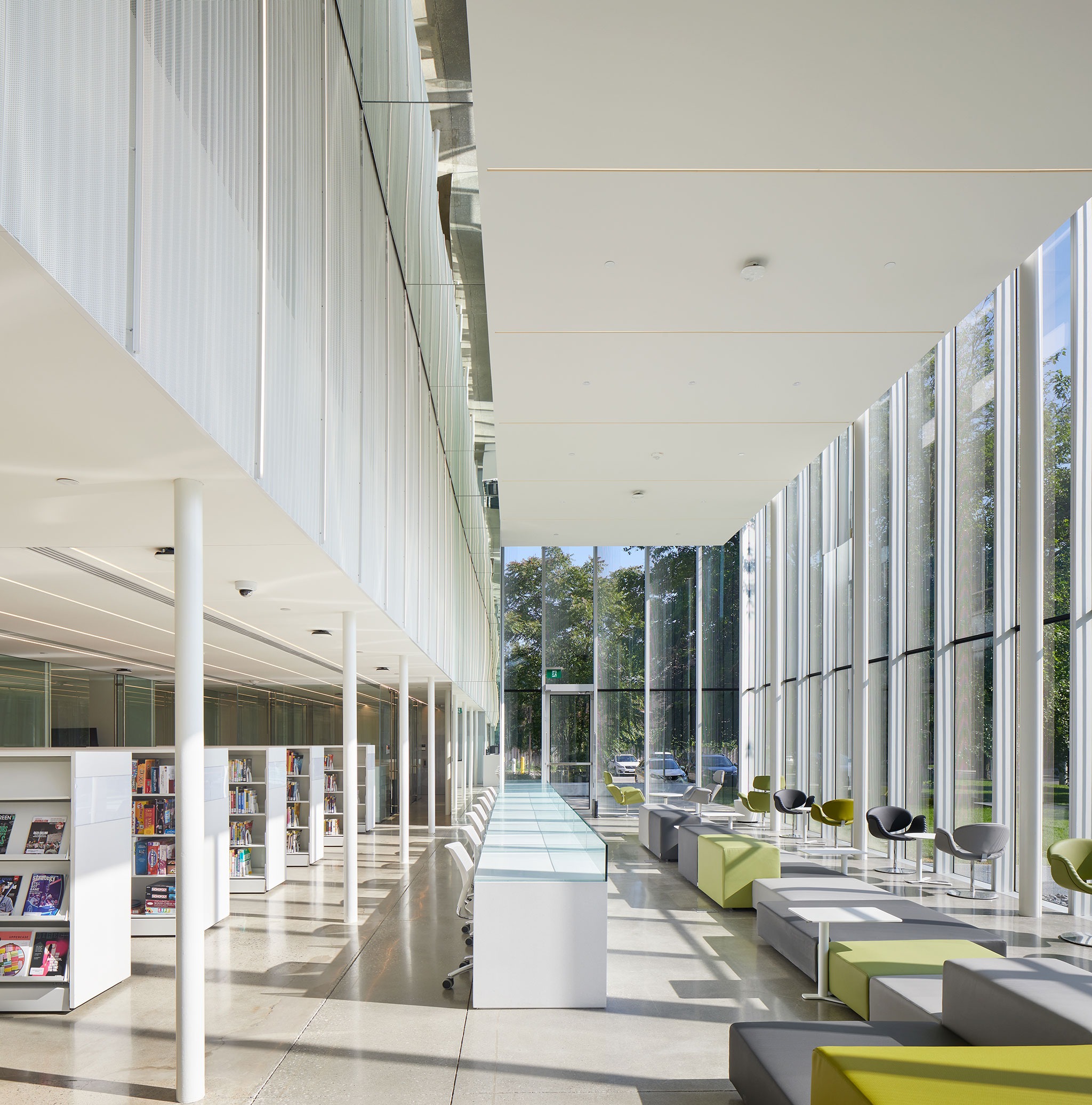
As a first step, the RDHA team opted to demolish the original extension, whose irregular shape stood out in stark contrast to the existing structure. Respecting the wind pattern, they chose to demolish the original extension, whose irregular shape contrasted sharply with the existing structure. Respecting Dickinson's window pattern, the new extension is conceived as a glass box with vertical windows and horizontal lines, establishing a reflective dialogue between old and new. Over the glass, a cascading pattern of vertical lines creates an optical effect that, in addition to reducing glare, minimizes the building's thermal gain.
Inside, a double-height reading atrium and a general collections area articulate the spatial organization. These are complemented, around the perimeter, by a creative workshop, a virtual reality studio, study rooms, offices, and a computer lab/multimedia screening room. Transparency, multi-planar views, and refined materials create a serene environment. Through the use of reflective surfaces—which dematerialize the language of the extension—the project is sensitively integrated into the existing context.
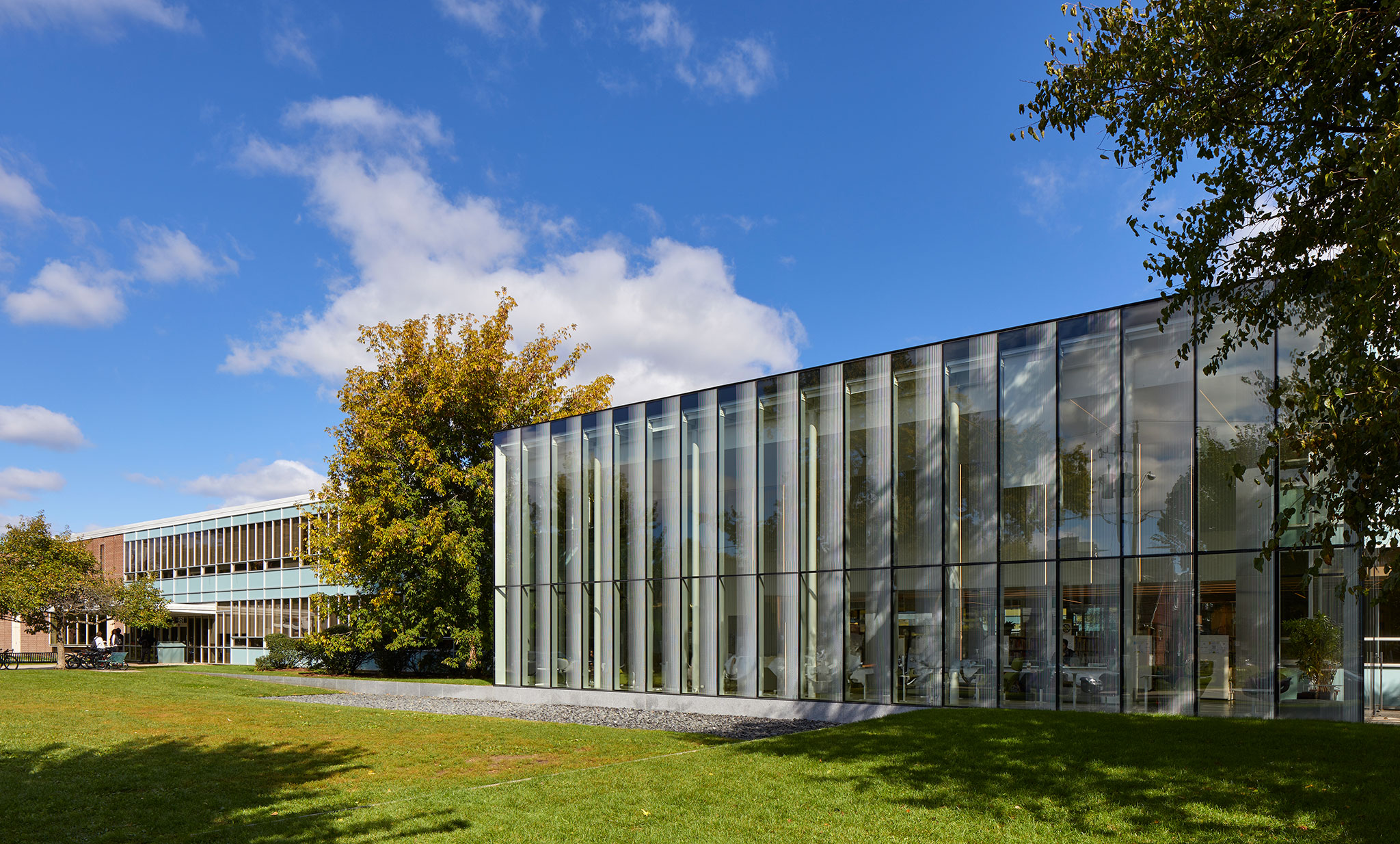
Centennial College’s Story Arts Campus Library by RDHA. Photograph by Tom Arban.
Project description by RDHA
Centennial College’s Story Arts Campus in Toronto’s East York occupies a restored 1954 Toronto’s Teachers’ College building designed by renowned Toronto Modernist, Peter Dickinson. One of the architects’ greatest works, the building received a Massey Medal for Architecture. RDHA was commissioned to renovate the building’s 500 square metre library and rebuild a 1990’s addition whose irregular form protruded from the original structure in sharp contrast. Demolishing this element included removing partitions, a staircase, and structural columns to optimize the available spaces for programming. With a clean slate, we refurbished and replaced existing mechanical and electrical systems and developed a conceptual approach centered around lightness – reinventing the library as a vibrant space that both acknowledges and contemporizes Dickinson’s modernist design language.
While the previous addition worked against the building, we designed a glass box with rhythmic vertical window bays and horizontal alignments that align with and respect the window pattern used by Dickinson. The result creates a thoughtful dialogue between old and new structures. On the glass, a ceramic frit pattern of vertical striations in cascading widths creates a trompe-l’oeil impression of elegant internal louvers, while also helping to reduce glare and minimize solar transmission into the building. A subtley integrated glazed door opens the library experience to a small concrete slab courtyard, terminated by a concrete bench. We also cut a grey granite sliver into the generous front lawn and a river rock “pool” to simply and minimally fade the building into the landscape.

On the interior, transparency, sightlines, views, and clean materials inspire a calm space. The highlight of the largely open-concept plan is a double-height reading atrium and general collections space with various seating types for solo and group learning. On the perimeter, we arranged glass-walled programmed spaces with sliding glass doors: a maker space and VR studio, study rooms and offices, and a computer lab/media screening room. We also fully glazed the internal facade to the building’s internal corridor so that it functions as an exhibition space, invites the curiosity of passersby to explore the library, and draws further light and views from the building’s interior courtyard beyond.
Extensive use of transparent and reflective materials such as mirrors and glass maximize natural light and dematerializes the language of the new addition, allowing the existing architecture to be perceived in a clear and respectful manner. New polished concrete floors add to the luminosity and provide a durable surface for events.

A customized, and perforated, 7/8 corrugated metal screen shields an existing second-storey classroom from the aesthetic language of the new library, drawing light in like a scrim curtain with aluminum extruded LED lights hiding the joint so that it appears as one surface. Throughout, we integrated Interlux lighting, custom Corian millwork, and furnishings by iconic designers such as Piero Lissoni and Pierre Paulin, with custom upholstery in soft greys and greens cued from both the original building and its verdant lawn, uphold the quality of the space and help to integrate it with its surroundings.
This small project is seen as an independent building element that provides the existing campus and the neighboring community with an example of how architecture might evolve to incorporate highly sustainable systems in a beautiful, rhythmic, and expressive manner.
